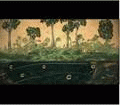Tropical forest conversion contributes as much as 25% of the net annual CO2 emissions and up to 10% of the N2O emissions to the atmosphere. The net effect on global warming potential (GWP) also depends on the net fluxes of greenhouse gases from land-use systems following deforestation. Efforts to mitigate these effects must take into account not only the greenhouse gas fluxes of alternative land-use systems but also the social and economic consequences that influence their widespread adoption. The global alternatives to slash-and-burn program (ASB) investigated the net greenhouse gas emissions and profitability of a range of land-use alternatives in the humid tropics. The analysis showed that many tree-based systems reduced net GWP compared to annual cropping and pasture systems. Some of these systems are also profitable in terms of returns to land and labor. The widespread adoption of these systems, however, can be limited by start-up costs, credit limitations, and number of years to positive cash flow, in addition to the higher labor requirements. Projects that offset carbon emissions through carbon sinks in land use in the tropics might be a means of overcoming these limitations. A synthesis of the findings from this program can provide guidelines for the selection and promotion of land-use practices that minimize net global warming effects of slash-and-burn.
DOI:
https://doi.org/10.1023/B:ENVI.0000003634.50442.ca
Altmetric score:
Dimensions Citation Count:























